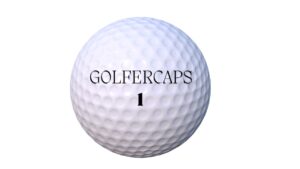Golf, a sport rich in tradition and meticulous detail, often leaves newcomers puzzled by its myriad nuances. One such detail is the number on a golf ball. You might have noticed single, double, or even triple-digit numbers on your golf balls and wondered, “What do these numbers mean?” Well, you’re not alone. This article will demystify the significance of those little numbers and explain how they can impact your game.
Understanding the Basics
Introduction to Golf Ball Numbers
Golf ball numbers have been a part of the game for decades. Initially, they were used primarily for identification, helping players distinguish their balls on the course. Over time, however, these numbers have come to signify much more.
The History Behind Golf Ball Numbering
The tradition of numbering golf balls dates back to when golf first gained popularity. Manufacturers added numbers to help players keep track of their balls, especially in tournaments where many players use the same brand.
The Purpose of Numbers on Golf Balls
Today, numbers on golf balls serve multiple purposes. They help with identification, provide information about the ball’s characteristics, and can even be used for personalization.
Read also: What Golf Ball Goes the Farthest?
Types of Numbers on Golf Balls
Single-Digit Numbers

Single-digit numbers, usually 1 to 9, are the most common. These numbers are primarily used for identification purposes.
Identification Numbers
When you’re on the course, it’s easy to lose track of which ball is yours, especially if your playing partners use the same brand. The single-digit number helps differentiate between balls.
Customization and Personalization
Many golfers choose to have custom numbers on their balls. This could be a favorite number, a lucky number, or even a significant date.
Double-Digit Numbers

The Role of Double-Digit Numbers
Double-digit numbers, often between 10 and 99, can indicate different aspects of the golf ball, such as its model or specific features.
Identifying Compression Ratings
Some manufacturers use double-digit numbers to denote the ball’s compression rating, which affects how the ball reacts when struck.
Golf Ball Models and Their Numbers
Different models within a brand might be distinguished by double-digit numbers, helping players quickly identify their preferred ball.
Triple-Digit Numbers

Understanding Triple-Digit Numbers
Triple-digit numbers, usually from 100 to 999, are less common but can still be found on some golf balls. These numbers often relate to the ball’s compression rating.
High Compression Ratings
A triple-digit number typically indicates a high compression rating. These balls are designed for players with faster swing speeds.
Manufacturer-Specific Codes
In some cases, triple-digit numbers might be part of a manufacturer’s coding system, providing detailed information about the ball’s specifications.
Read also: What is the Best Golf Ball for Seniors?
Choosing the Right Golf Ball

Selecting the perfect golf ball can significantly impact your game. With numerous options available, it’s essential to understand what to look for. Here are the top 10 tips to help you choose the right golf ball:
1. Understand Your Skill Level
Beginner: Opt for a two-piece ball with a durable cover for more distance and less spin. Intermediate: Choose a ball that offers a balance between distance and control. Advanced: Look for multi-layer balls that provide better control and spin around the greens.
2. Identify Your Swing Speed
Low Swing Speed (below 85 mph): Use low compression balls for better distance and control. Medium Swing Speed (85-100 mph): Opt for medium compression balls for a balanced performance. High Swing Speed (above 100 mph): High compression balls are ideal for maximizing distance.
3. Determine Your Preferred Feel
Soft Feel: Provides more control around the greens and a pleasant sensation on impact. Firm Feel: Offers more distance and a more solid impact feel, ideal for longer shots.
4. Consider the Weather Conditions
Cold Weather: Use low compression balls as they remain softer and provide better control. Hot Weather: High-compression balls perform well as they maintain their firmness.
5. Focus on Ball Construction
Two-Piece Balls: Best for beginners due to their durability and distance. Three or More Piece Balls: Suited for intermediate and advanced players looking for more spin and control.
6. Evaluate Spin Rates
Low Spin: Helps reduce sidespin and improve accuracy, ideal for beginners. Medium Spin: Balances distance and control, suitable for intermediate players. High Spin: Enhances control and feel around the greens, preferred by advanced players.
7. Check the Cover Material
Surlyn: Durable and provides more distance, suitable for beginners. Urethane: Softer and offers more spin and control, ideal for advanced players.
8. Assess Your Budget
Affordable Options: Two-piece balls are generally more budget-friendly. Premium Options: Multi-layer balls with advanced technology may be pricier but offer better performance for skilled players.
9. Try Different Brands
Don’t hesitate to experiment with various brands. Each brand has its unique technology and feel, so find one that suits your game best.
10. Consider Personal Preferences
Ultimately, personal preference plays a significant role. Consider factors such as color, feel, and even brand loyalty when choosing your golf ball.
Read also: Do Golf Balls Expire?
The Science Behind Golf Ball Numbers
There isn’t much science directly related to the numbers you see on golf balls. Those numbers typically refer to the model and sometimes specific qualities of the ball, targeted towards marketing and helping golfers choose the right ball for their needs.
The real science is in the design of the ball itself. Golf balls are little marvels of engineering, with multiple layers and strategic dimpling to achieve optimal flight characteristics. Here’s a breakdown of the key factors:
-
Layers: A modern golf ball typically has a core, mantle (sometimes), and cover. The core material and its hardness affect compression and distance. The mantle layer, if present, can influence spin and feel. The cover, often made of a durable polymer with dimples, is crucial for aerodynamics and spin generation.
-
Dimples: These aren’t just cosmetic! Dimples help the ball stay airborne longer. As the ball spins through the air, the dimples create a turbulent boundary layer that reduces drag and allows for lift, similar to an airplane wing. Manufacturers can vary the number, size, and depth of dimples to achieve different performance benefits.
So, next time you see a numbered golf ball, remember the science is in its construction, not the number itself. That number is there to help you pick the right ball for your swing and desired performance!
Popular Myths and Misconceptions
Common Myths About Golf Ball Numbers
There are several myths surrounding golf ball numbers. One common belief is that higher numbers mean better performance, which isn’t necessarily true.
Do Higher Numbers Mean Better Balls?
Not always. The number on the ball doesn’t equate to quality. It’s more about matching the ball’s characteristics to your playing style.
Debunking Common Myths
Understanding what the numbers mean can help debunk these myths. Remember, the number is just one aspect of a golf ball’s design.
Customization and Personalization
Customizing Your Golf Balls
Many golfers enjoy adding a personal touch to their balls. Custom numbers, logos, and designs are popular options.
Personalized Numbers and Designs
Personalizing your golf balls with your favorite number or a special design can make them uniquely yours and easy to identify on the course.
Benefits of Custom Golf Balls
Custom golf balls not only add a personal touch but can also prevent mix-ups during play, ensuring you always know which ball is yours.
Conclusion
In summary, the number on a golf ball is more than just a simple identifier. It provides insights into the ball’s characteristics, helps with identification, and allows for personalization. Understanding what these numbers mean can help you choose the right ball for your game, ultimately improving your performance on the course.
FAQs:
- Do golf ball numbers affect performance?
Not directly. The numbers themselves are identifiers, but they can indicate characteristics like compression which do affect performance.
2. Can I choose any number for my golf ball?
Yes, many manufacturers offer customization options allowing you to choose your preferred number.
3. Are certain numbers luckier than others?
While some players have personal preferences or superstitions, there’s no evidence that certain numbers perform better than others.
4. What’s the best number for beginners?
Beginners should focus on the ball’s compression rating rather than the number. Lower compression balls (softer) are generally better for beginners.
5. How do manufacturers decide on numbers?
Manufacturers use numbers for identification, compression ratings, and sometimes for marketing purposes. The choice of numbers varies by brand and model.










